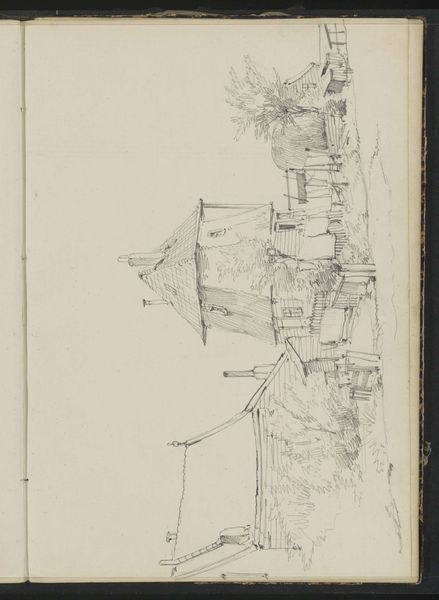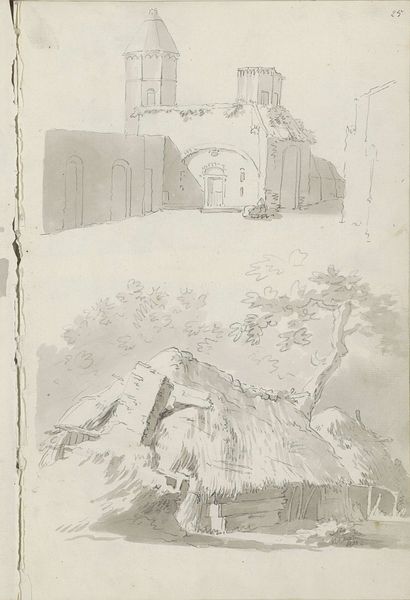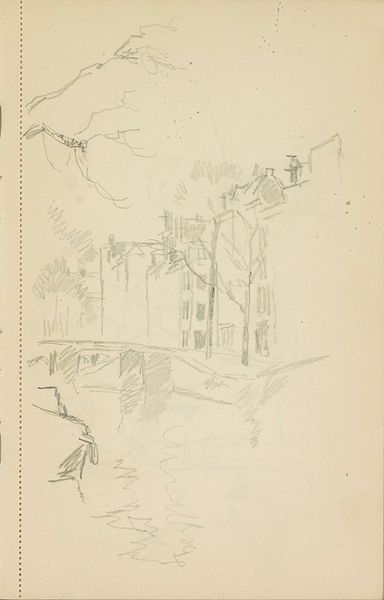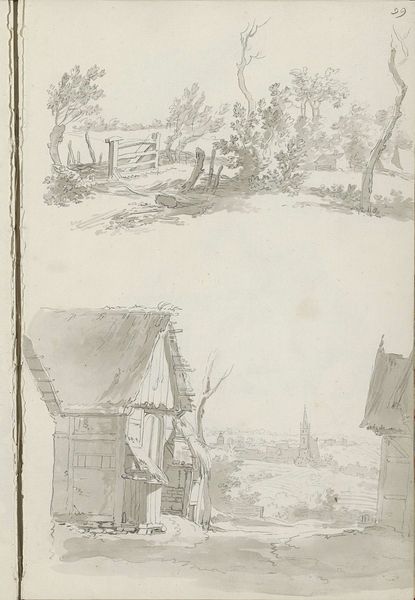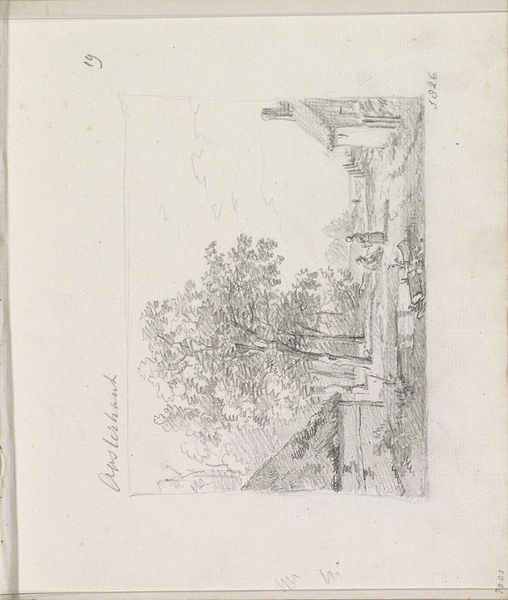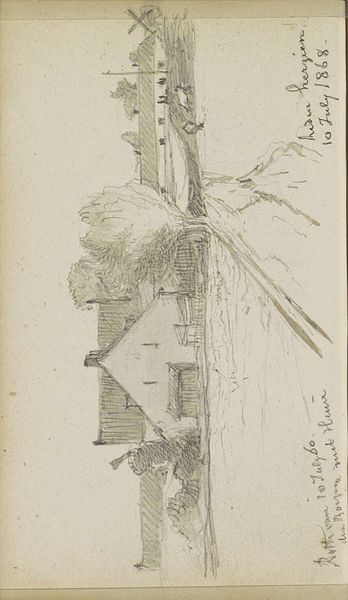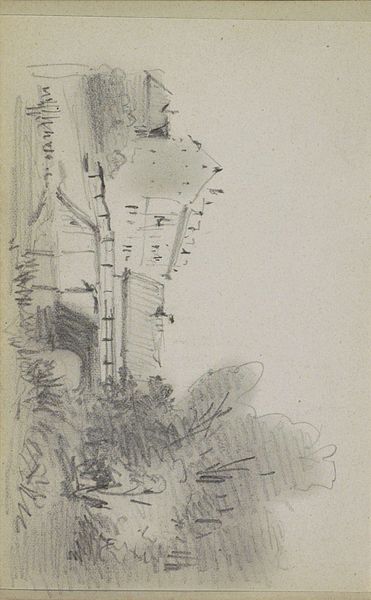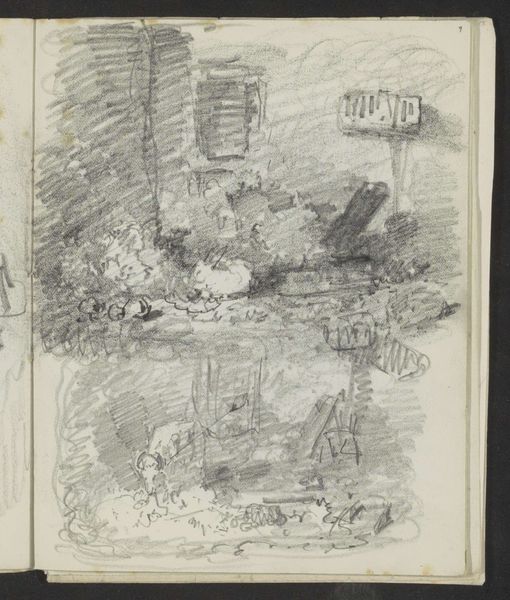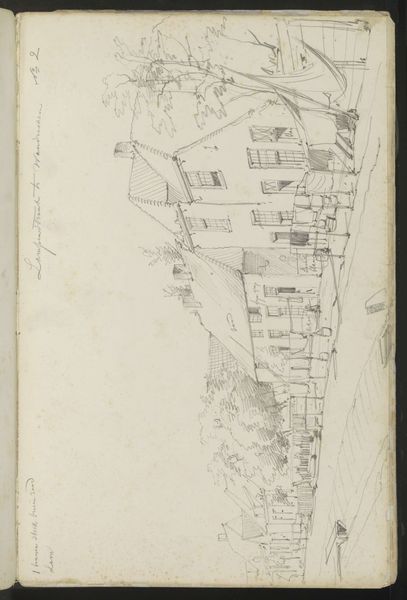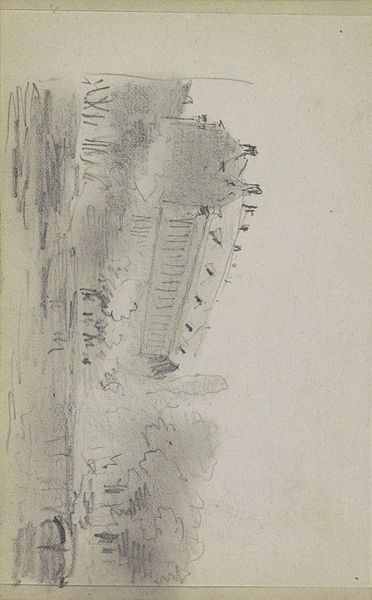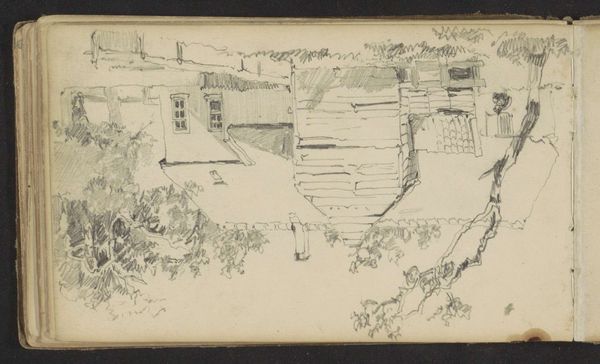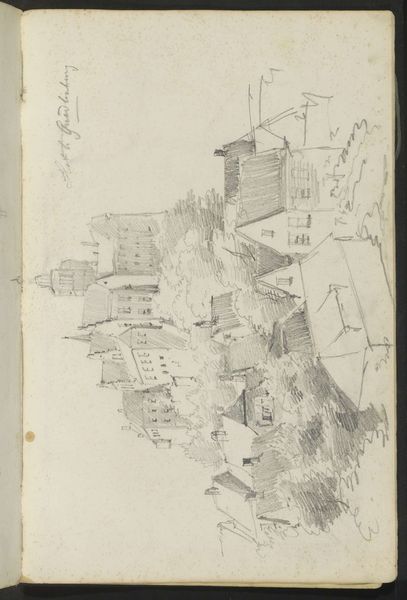
drawing, architecture
#
drawing
#
neoclacissism
#
landscape
#
architecture
Copyright: Rijks Museum: Open Domain
Curator: Let’s consider this understated drawing by Barend Hendrik Thier. It's titled "Walled building and a landscape with windmill" and thought to be from around 1780 to 1800. Editor: Immediately, I notice a split composition; the stark architectural forms versus the natural setting with the windmill seem disconnected, even alienating. There’s a ghostly, unfinished quality. Curator: Precisely, and it speaks to Thier’s position within late 18th-century art. While we see the Neoclassical fascination with idealized forms in the upper portion depicting architectural ruins, the looser lines of the lower landscape nod to Romanticism. Editor: It's interesting how the upper image seems to oppress or overshadow the lower pastoral image. In what kind of institutional and public environments would these drawings have been consumed? It looks to me as if nature is fighting with artifice and ultimately not succeeding. Curator: Thier likely made this as a study, as part of his broader practice, as opposed to a finished exhibition piece. Remember, art at this time was largely commissioned, supporting aristocratic or increasingly, bourgeois tastes, dictating that these architectural studies of stately buildings serve to project ideals of order and permanence during turbulent political times. Editor: Right. Even the medium – a muted wash – is a form of erasure or muting of color. There is nothing vibrant or lively, only grays that drain this of any sense of freedom or beauty. It suggests the controlling nature of the Neoclassical gaze upon the Dutch landscape and perhaps it symbolizes the way powerful Dutch architectural patrons asserted dominance. Curator: Your reading resonates well within current academic thought. The drawing underscores that artistic expression during the Neoclassical period wasn't simply about aesthetic preferences, it actively participated in shaping and reinforcing specific social structures and political ideologies. Editor: Considering the context, what struck me as initially unsettling now reads as deliberately bleak. Curator: I agree. What seemed at first a somewhat disconnected exercise in representation now appears loaded with intention. Thanks for these interpretive considerations, your points broaden the horizons of our listeners.
Comments
No comments
Be the first to comment and join the conversation on the ultimate creative platform.
